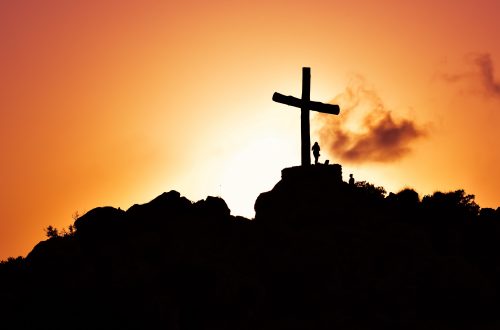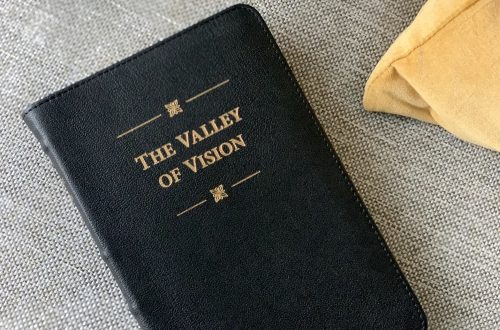Now that it’s Advent I’ve begun my annual tradition of complaining/explaining to Protestants that no matter how charming you find this picture, it’s presenting heretical theology (i.e., Mary as co-redemptrix). pic.twitter.com/TKJFxeiGSz
— Joe Carter (@joecarter) December 3, 2018
Earlier this week, Joe Carter tweeted his skepticism about a popular image depicting Eve and Mary (see above). That one tweet led to spirited debate on social media about the proper meaning and interpretation of this picture. One side argues that the image depicts an unbiblical form of Marian devotion. The other side argues that the image represents a biblical view of Mary’s place in the gospel story—one that is completely friendly to the Protestant tradition of scriptural interpretation.
So which side is correct? Today, Luke Stamps and Matt Emerson have a long essay arguing for the latter. They give a long exposition of biblical typology concerning Mary and Eve. I think that most of what they write on this point isn’t very controversial. In fact, I think folks on both sides of the controversy about the picture may very well agree about many of the inner-biblical connections that Emerson and Stamps highlight.
But I question whether that typology is really the main point of contention. Concerning the picture itself, the main issue is not so much biblical typology but artistic intent. Did the artist intend to communicate an unbiblical form of Marian devotion or did the artist intend to communicate something amendable to Emerson’s and Stamps’ interpretation? By the end of their essay, the answer to that question is still unclear as far as I can tell.
Indeed, even Emerson and Stamps begin their exposition of scripture with these words: “Let’s set aside for the moment the artist’s intention or subsequent viewer interpretation of this particular image.” But even if we set aside the artist’s intention in order to establish the relevant biblical background, don’t we have to come back to the artist’s intention after that background has been established? I think we do.
Earlier this week after seeing some controversy on social media, I decided to investigate what could be known about the artist’s intent. It turns out that the artist is indeed a Roman Catholic. In fact, she’s a Roman Catholic nun. In the one interview with her that I could find, she discusses the picture but does not give a detailed explanation of her intention with the symbolism. So we are left with a question mark. Given her devout Roman Catholic beliefs, it is not unreasonable to conclude that she produced a piece of art that reflects those convictions.
It is possible, I suppose, that she intended to communicate the kind of typology that Emerson and Stamps advocate in their essay. But how would we know that? Even Emerson and Stamps acknowledge that “Certainly there may be some Roman Catholic error in the mind of the original artist.” If that is the case, on what grounds could one exonerate the artist’s intent?
I know that some people don’t think that artistic intent is important in assessing a work of art. I am not among those who hold that point of view. I am sure that there are many lines from the Mormon hymnbook that I could sing if I were allowed to sing them in a way that evacuated the artist’s intent and filled it with my own preferred meaning. But that is—in my view—a misrepresentation and suppression of the author’s own expression. And we don’t sing Mormon hymns precisely because we understand that what Mormons mean by words like “Father” and “Son” is far different from what evangelical Christians mean by those same words.
The golden rule applies to hermeneutics—”Do unto others as you would have them do unto you” (Luke 6:31). Would you want someone to interpret your expression in a way that misrepresents and suppresses your meaning? If the answer to that question is no, then why would you do that to someone else’s expression?
So for me, the bottom line is artistic intent. With respect to the painting, either the artist intended to communicate an unbiblical form of Marian devotion, or she didn’t. I suppose folks will read their own preferred interpretation into this painting regardless of what the artist intended. But if artistic intent matters, then certainly her Roman Catholicism would influence our interpretation of this image. Apart from some mitigating word from the artist otherwise, isn’t it as likely as not that the artist intended to communicate some form of Roman Catholic Marian devotion?



